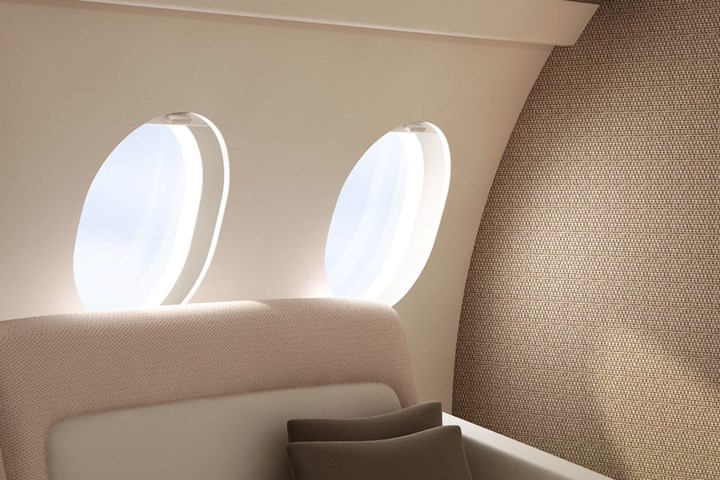CAMX 2022 exhibit preview: Culture iN
Biodegradable and VOC-free flax-based textile, Varian, offers composites manufacturers a more ecological, environmentally friendly alternative to carbon and glass fiber composites.
Share
Culture iN (Montaigu-Vendee, France) introduces a composite textile made from flax threads and vegetable resin PLA (corn starch). The result of three years of R&D, Varian is a sustainable, bio-based materials that is used in transportation and luxury industries. It is biodegradable, VOC-free and has a positive carbon impact. Moreover, it can be cut as desired and stitched; through a simple heating process, Culture iN says slabs are molded, profiles are folded and reliefs embossed, with a variety of other possibilities available. The raw material is manufactured, dyed (GOTS label) and woven in France.
According to Culture iN, ecological concerns have resulted in a renewed interest in natural materials in the composites industry. Plant fibers such as flax are under consideration as environmentally friendly and relatively low-cost alternatives for glass fibers in structural engineering composites. However, their current use is mainly confined to reinforcement in compounded thermoplastic products similar to glass mat-reinforced thermoplastics, with primary applications including the automotive sector, and within interior and exterior components.
Flax fibers are located in the bast of the flax plant. The fibers are typically extracted by retting followed by mechanical processing (scutching and hackling). The mechanical properties of the obtained fibers are affected by the natural variability in the plant, processing and damage sustained during
processing and thus have considerable scatter, Culture iN says.
Flax has a density of 1.45, making it lighter than carbon or glass fiber. Its specific tensile strength is 875 MPa, nearly equal to glass fiber (866 MPa). Moreover, flax is characterized by a specific modulus of 38 GPa, which is 36% higher than glass fiber (28 GPa). Flax also offers properties concerning electromagnetic transparency with a lower signal attenuation and permittivity than fiberglass. With a coefficient of thermal expansion (CTE) equivalent to carbon fiber, flax can be used in tooling.
Related Content
-
Cryo-compressed hydrogen, the best solution for storage and refueling stations?
Cryomotive’s CRYOGAS solution claims the highest storage density, lowest refueling cost and widest operating range without H2 losses while using one-fifth the carbon fiber required in compressed gas tanks.
-
Infinite Composites: Type V tanks for space, hydrogen, automotive and more
After a decade of proving its linerless, weight-saving composite tanks with NASA and more than 30 aerospace companies, this CryoSphere pioneer is scaling for growth in commercial space and sustainable transportation on Earth.
-
Plant tour: Albany Engineered Composites, Rochester, N.H., U.S.
Efficient, high-quality, well-controlled composites manufacturing at volume is the mantra for this 3D weaving specialist.














